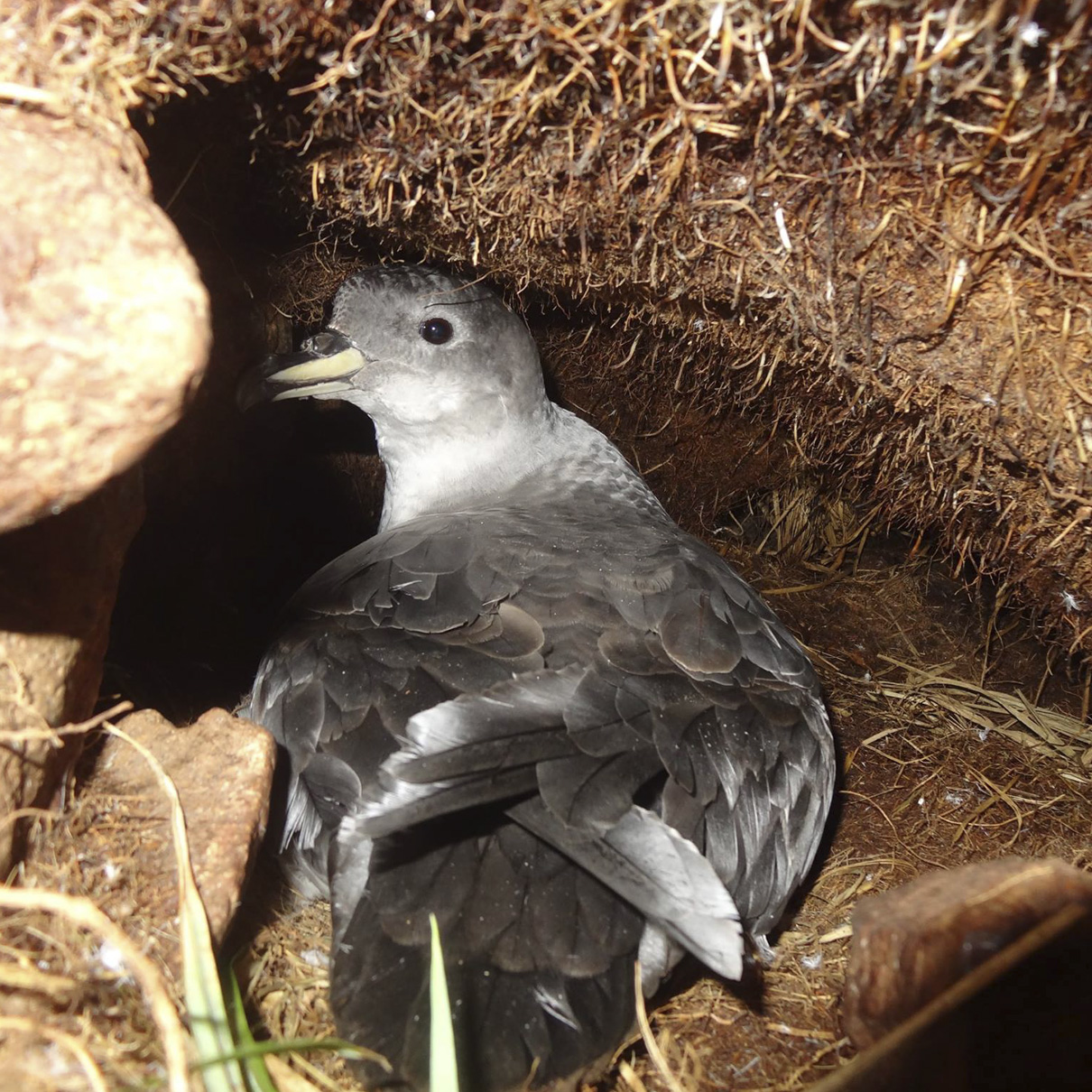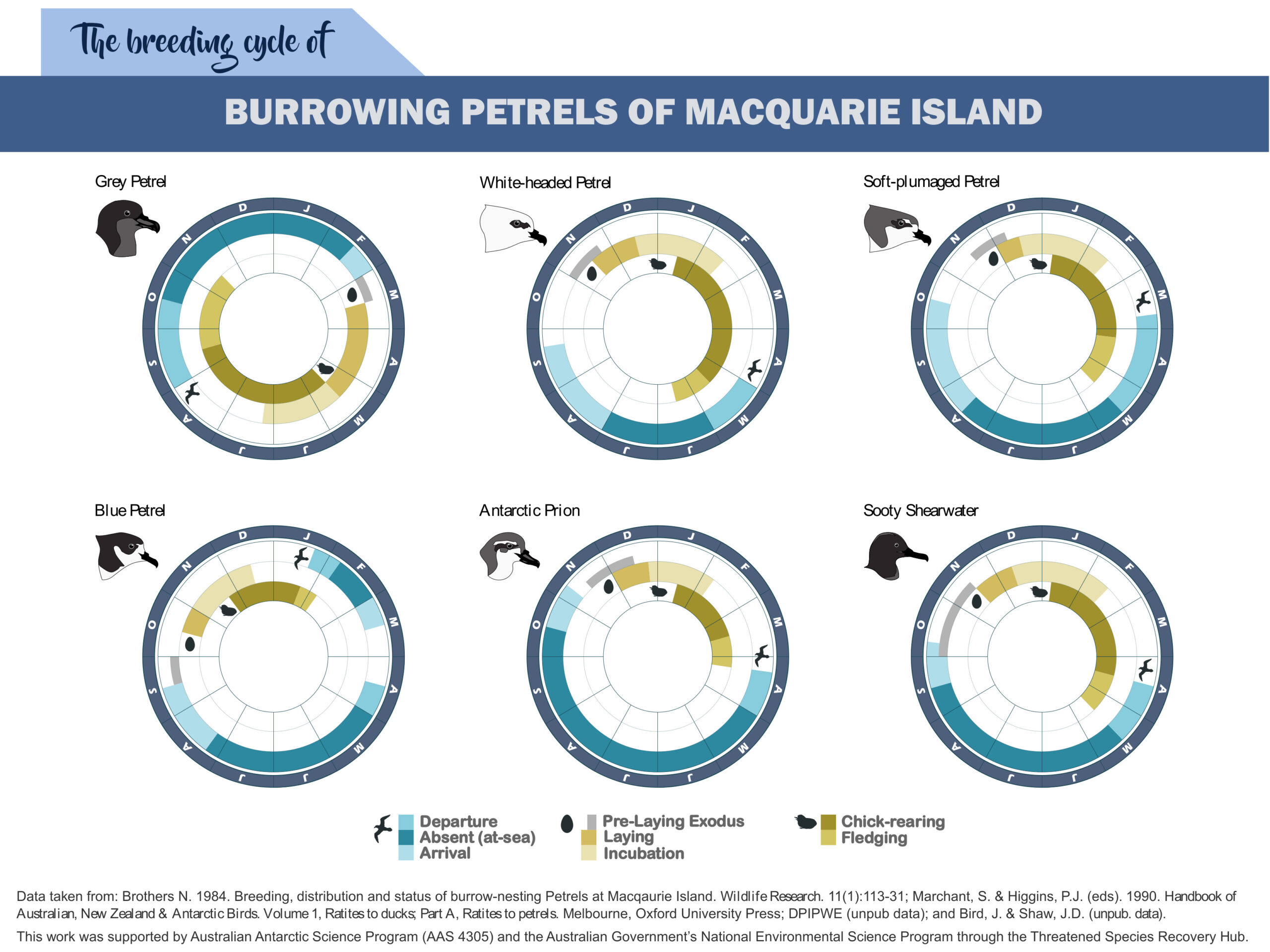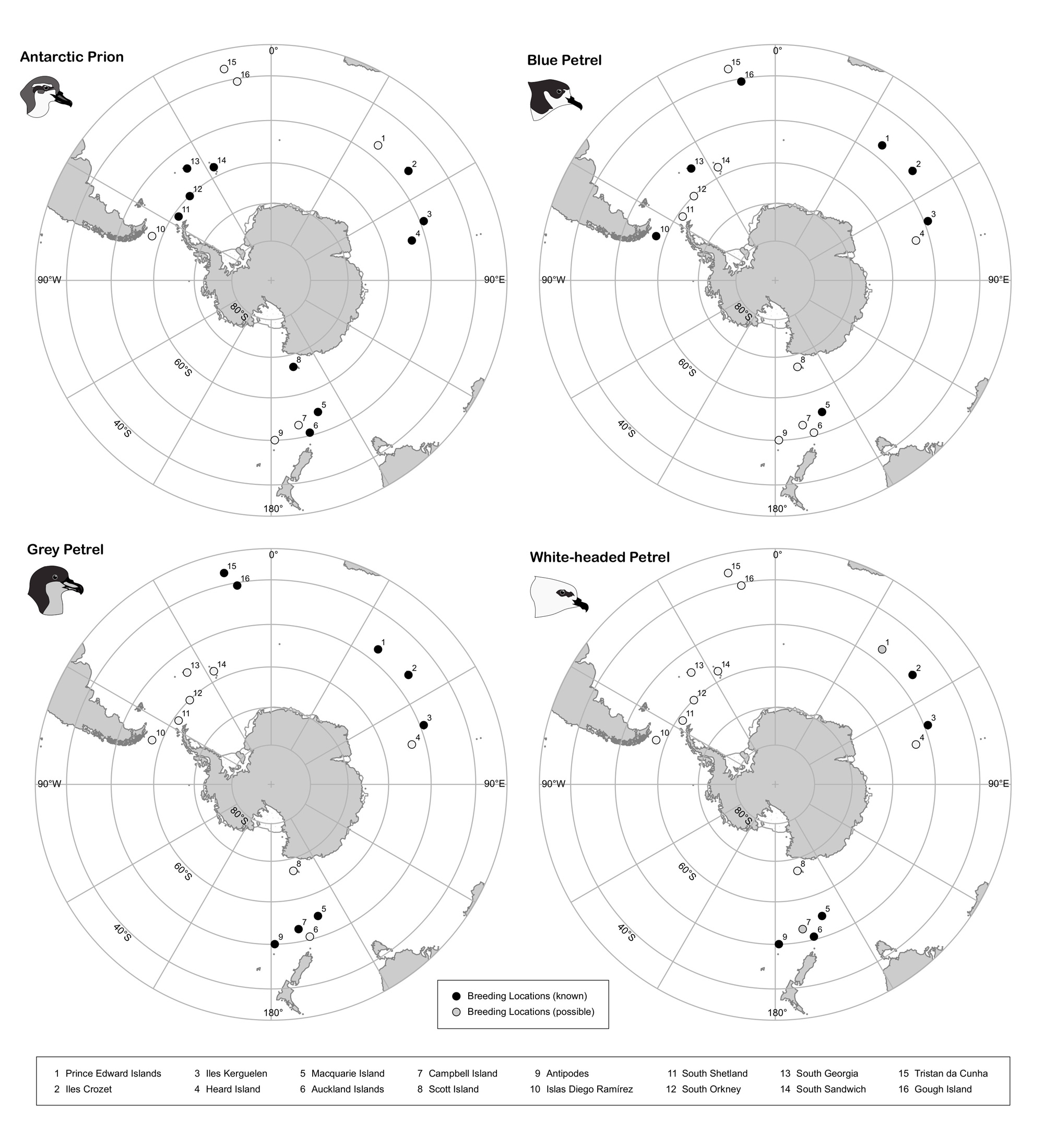OUR RESEARCH
Burrowing Petrels
Burrowing petrels that were preyed upon by cats and rats and their nesting habitats were greatly altered by rabbit grazing. As their burrowing habit makes them difficult to monitor, bio-acoustic recorders and other novel technologiesare being trialled.

Research aims
We have been researching the dynamics of petrel recovery on Macquarie Island in response to invasive species management. They are a threatened group of seabirds and a national priority for conservation management. As a result of our research we are recommending that several species can be removed from state or federal threatened species lists as they no longer meet the criteria for being considered threatened. However, current populations, while recovering, are still far from their potential levels, and petrels are not yet fulfilling the important ecological roles they play in uninvaded ecosystems.
Burrowing Petrels
Petrels are smaller cousins of the albatrosses. Found throughout the world’s oceans from tropical to polar latitudes, they nest on remote islands naturally free of mammalian predators. The largest populations are found in the Southern Ocean where they play important roles in marine and terrestrial island ecosystems. Petrels consume prey volumes equivalent to commercial fisheries, helping to regulate marine food webs, and they transfer the nutrients from their prey to islands. Deposited in guano, these nutrients leach into soils and coastal waters where they fuel productivity.
Almost half of the world’s 124 petrel species are threatened with extinction, predominantly owing to the impacts of invasive predators intentionally or accidentally introduced to islands by humans. On Macquarie Island this caused the local extinction of several petrel species in the 19th and early 20th centuries. Of 14 species known or thought likely to have bred on Macquarie at one time, by the 1970s just three species were found to remain on the main island, albeit experiencing declines, while a further three species were recorded from offshore rock stacks. Listed as threatened species under state or federal legislation as a result, pest management began, resulting in the staged eradications of introduced predators. Wekas, a ground-bird from New Zealand originally introduced as food for people but which devastated populations of smaller petrels by eating eggs and chicks, were eradicated in 1988, cats by 2001, and rabbits, rats and mice in 2011-2014.
As defence mechanisms against other birds like skuas which naturally predate petrels, they nest in under-ground burrows to which they only return at night. These burrows are scattered across challenging terrain, often concealed beneath dense vegetation, all of which makes them very difficult to survey.
Survey
Much of our work has focussed on why and how best to survey petrels to inform future monitoring and management. We have trialled novel survey methods like camera-traps and acoustic recorders, and novel analytical approaches like species distribution models to provide contemporary estimates of nesting occupancy, breeding success and overall abundance and distribution on Macquarie Island.
What did we find?
On Macquarie Island we found that the most abundant species on the island, Antarctic Prions, thanks to their tolerance of a broader climatic and ecological niche than other species and apparent resilience to some predators, were able to survive in refugial habitat on the island’s plateau. Their current distribution is similar to 1970s levels. In contrast, the range of larger White-headed Petrels, whose burrows were large enough to be entered by cats, contracted since 1970s levels during two further decades of cat predation. Both species are now increasing, as are the populations of Blue Petrels and Grey Petrels which had been extirpated from the main island but recolonised in the early 2000s. The current size and increasing trends of Blue and White-headed Petrel populations suggests they are no longer threatened with extinction in Australia, and Grey Petrels are likely to warrant delisting by 2026.
The best habitat for petrels, well drained coastal slopes with easy access to the sea, is currently heavily under-utilised. While invasive species management has removed the immediate threats to petrel populations, we think their current populations are well short of historic maxima, and full recovery of populations, and restoration of the ecological functions they provide may take decades. We are focussed on communicating these messages in compelling ways to conservation practitioners, decision makers and the civil society to continue building the case for island restoration. In addition, we are continuing research into the complex dynamics that underpin island recovery and assessing the serendipitous findings that result from on-ground field ecology.
Breeding Phenology
Sounds
Blue Petrel duet
Grey Petrel call
Common Diving Petrel
Sooty Shearwater duet
Distribution Maps
Publications
Further information
For more information regarding this project please contact:
Dr Justine Shaw – shaw.justine@gmail.com or
Jez Bird – jez.bird@uq.edu.au








 Uncertainty in population estimates: a meta-analysis for petrels.
Uncertainty in population estimates: a meta-analysis for petrels.